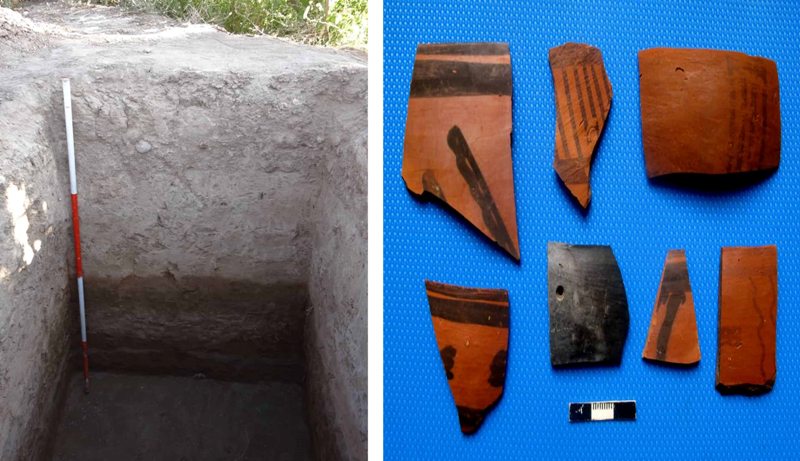The second season of the probing operation was conducted in Emadeddin 2 in Rooyan, Shahroud, which is one of the largest Neolithic areas in the northeast Iran a major part of which is under the orchards and vineyards.
The Public Relations Office of the Research Institute of Cultural Heritage and Tourism (RICHT) quoted Hassan Rezvani Nikabadi, the head of the archeology team, as saying on Sunday that Emadeddin 2 area is located on the southern border of the city of Shahroud, on the both sides of the city’s ring road, and based on the findings the date of the settlement there is at least the middle of the seventh millennium BC up to the later fifth millennium BC.
The archeologist further remarked that the area with a span of more than ten hectares is one of the largest Neolithic areas in the northeast of Iran.
Referring to the first season of the probing operation in the site in which 13 boreholes were made, he pointed out that in the second season which is currently underway, so far eight boreholes have been created in the marginal areas of the enclosure.
According to Rezvani Nikabadi, what has further complicated the probing operation in the site is the human manipulation over the past decades in order to level the ground and develop orchards.
He noted that during the human manipulation a large part of the ancient deposits has been transferred from some parts of the enclosure to the other parts which has further added to the complexity of the operations to determine the limits of the site.
According to the head of the field operations, the importance of Emadeddin 2 area, except for its unusual expansion, is in the evidence of the human settlement through seventh millennium BC in east of Zagros and the beginning of pottery making in the area.
He stated that evidence has so far been obtained only from the Flintstone western hill of Shahroud.
The head of the archeology team noted that site also revealed signs of transition from the Flint era to the Cheshme Ali period (late sixth millennium BC), which had not been discovered in the exploration operations of the Neolithic areas of Shahroud.
He added that the importance of the evidence is as such that the Archeology Research Institute intends to allocate funding for the stratigraphy of the area and retrieval of information and the evidence related to such indications.
9376**1396
Follow us on Twitter @IrnaEnglish

Tehran, Nov 5, IRNA - One of the largest 9000-year-old enclosures in the northeast Iran was saved from further destruction through investigative operations to determine the limits and privacy of the site.

